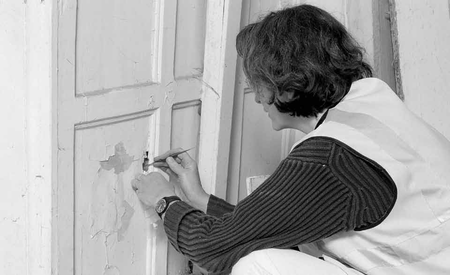APPENDIX II - INDIVIDUAL RESPONSIBILITIES#
 |
PROJECT EXECUTIVE#
- write project brief, specifying adherence to best practice or accepted professional and specialist standards
- provide local standards as appropriate
- assess project specifications and approve, or require amendments, as appropriate
- identify the appropriate archive repository and open and maintain communications
- monitor the project throughout to ensure that it is carried out to standards that will lead to the production of a secure, stable, accessible archive
- ensure that specialist advice and support is available as appropriate, to enable effective monitoring
- ensure that the project manager liaises with the Historic Environment Record so that appropriate links are made between the project archive and the HER
- certify completion following the deposition of the archive and appropriate reporting
PROJECT MANAGER#
- preserve project brief or project design for archive
- write project specification and preserve for archive
- communicate with the appropriate archive repository
- arrange for transfer of title and copyright
- ensure preservation of all documentary material suitable for archive
- ensure that all digital material is managed to facilitate security and access
- Document the creation of the digital archive
- Ensure all media are uncontaminated
- Back up all digital files
- Initiate an index to the digital archive
- Use a comprehensible directory structure.
- ensure that post-fieldwork activities, including the work of external specialists, meet accepted standards to ensure the production of a secure, stable, accessible archive
- ensure the collection of data and/or finds, and/or samples, and the creation of the primary record, meet accepted standards to ensure the production of a secure, stable, accessible archive
- Use appropriate materials
- Use a consistent system of classification and terminology
- Maintain indexes of documents, drawings, photographs, finds, samples
- Label or mark clearly and logically
- Ensure the security of the archive
- obtain microfilm copies of appropriate records and drawings
- employ properly qualified conservators and specialists
- monitor the work of specialists
- liaise with specialists, laboratories and the archive repository over the archiving of scientific samples
- ensure final reports, published material and draft reports are submitted with the archive.
- ensure that keys to conventions etc used in creating the primary record are included in the archive, or in the possession of the archive repository
- supervise all staff involved in the creation and preparation of the archive
FINDS MANAGER#
- ensure finds are treated and recorded to accepted standards, or to the standards of the archive repository
- Clean, mark and store finds as appropriate
- Document finds using consistent terminologies and methods of quantification
- Manage the production of x-radiographs of metal objects
- Liaise with conservators
- liaise with finds specialists to ensure accepted standards are followed
- ensure the security of finds in transit
- ensure the proper treatment of human remains
- manage the collection and ultimate deposition of scientific samples
- pack finds according to national standards and those of the archive repository
SPECIALIST#
- work to accepted national and local standards in the creation of records and the treatment of archaeological materials
- Ensure the security and preservation of all materials in your care
- Use local reference collections
- Use accepted terminologies and apply them consistently
- Employ accepted methods of quantification
- organise documentary and digital data for submission with the project archive
- Document the creation of digital records
- Create an index to documentary and digital records
- ensure the security of finds in transit from your premises
ARCHIVE MANAGER#
- follow the archive deposition standards of the relevant repository
- prepare the documentary archive
- Sort, classify and label different types of documents, drawings and photographs
- Pack as appropriate
- Ensure the microfilming of documents and drawings
- liaise with the finds manager in the preparation of the material archive
- liaise with the project manager in the preparation of the digital archive
- Ensure there is an index to the digital archive
- Ensure the digital archive is submitted on clean media
- Ensure there is a comprehensible file naming and directory structure
- Ensure transfer media are clearly marked in an appropriate way.
ARCHIVE CURATOR#
- ensure the project team has a copy of your archive deposition standards at the beginning of a project
- liaise with the project monitor, project manager, finds manager and archive manager throughout the course of a project
- liaise with the project manager and finds manager in determining retention and disposal policies
- arrange for copies of the digital archive to be submitted to a recognised digital archiving facility
- store all archive material to accepted standards
- liaise with the Historic Environment Record to ensure accessibility of the documentary archive
- ensure the provision of access to all parts of the archive